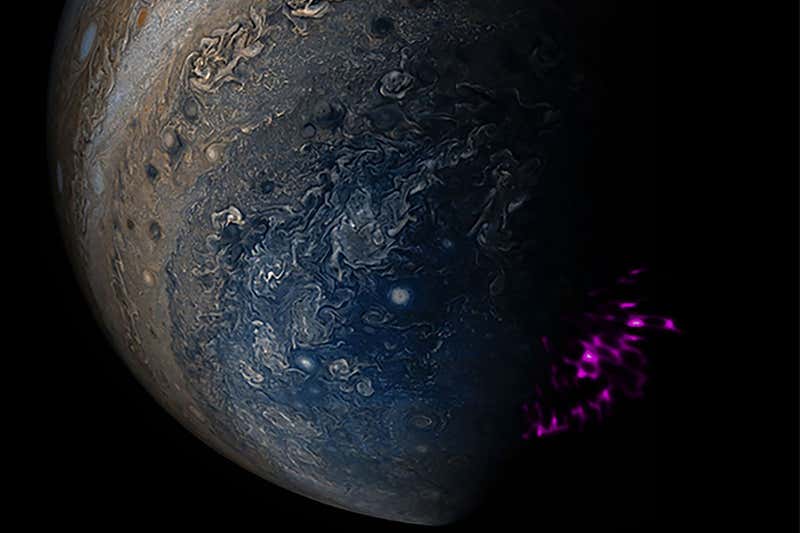Jupiter regularly blasts out powerful flares of X-rays as part of its auroras, but how it does so has been a mystery since these bursts were discovered. Now, researchers have finally figured out how they are generated.

“What we’ve found wasn’t any of the ideas that people had proposed in the last four decades since these X-rays were discovered,” says William Dunn at University College London. He and his colleagues used data from the European Space Agency’s XMM-Newton space telescope on Jupiter’s X-rays and from NASA’s Juno orbiter on the planet’s magnetic fields to explain the phenomenon.
They found that the X-rays occurred like clockwork once every 27 minutes, and they observed the exact same timing in vibrations along the planet’s magnetic field.
“You can picture the magnetic field of a planet kind of like strings on a musical instrument, and the field can vibrate like the strings on an electric guitar,” says Dunn. Those vibrations are made up of waves in the magnetic field. Charged particles get caught up in those waves, and then smash into Jupiter’s atmosphere, causing the X-ray pulses that we see.
“The planet just smashes this power chord out, and that vibration of the magnetic field carries the particles to the planet’s poles,” he says.
Understanding this phenomenon is important because it hints that the same sort of magnetic field vibrations may be crucial to some of the highest-energy processes in the universe.
“X-rays are typically used to study really exotic, super-energetic things like black holes, neutron stars, the gas that flows between galaxies, things that are on the edge of the human imagination,” says Dunn. “The only way we can really understand how those places generate these X-rays is to go to more nearby places that do it, like Jupiter.”
Source: Science Advances










